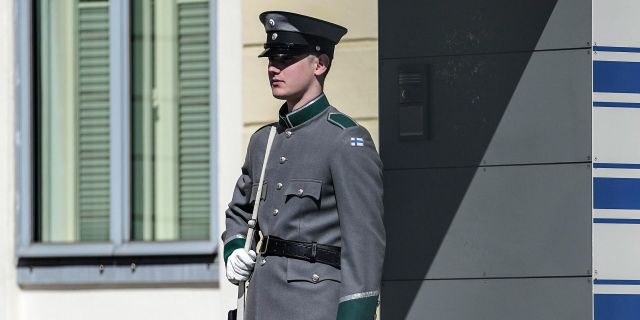Reservists and modern equipment. How the Finnish army works
The Italian website Inside Over decided to figure out how the Finnish army works, which has announced its intention to join the North Atlantic Alliance. The author of the publication talks about the key features of the Finnish armed forces.
Paolo Mauri
Before Finland applies to join NATO, it is interesting to look at the organization and the state of its armed forces in order to understand how this will be beneficial to the alliance from the point of view of defense. It should also be remembered that Helsinki's entry will immediately double the border of NATO with Russia, especially in the Arctic, where only Norwegian military personnel have been present so far.
There are important naval bases on the Kola Peninsula: the bases of the Northern Fleet of Russia are located between the Polar and Severomorsk (Murmansk region). It is in Polyarny that the naval component of the Russian nuclear triad is based: SSBMS (nuclear submarines with ballistic missiles) as part of Russia's Northern and Pacific Fleets are the only ones that Moscow currently has, they are not part of the Baltic and Black Sea Fleets and the Caspian Flotilla. In the depths of the Kola Peninsula, there are various important military bases and airfields that are designed not only to protect the ports of Murmansk and the country's territory, but also strategic goals in the Arctic, which has long been at the center of Moscow's defense policy: MiG-31 fighter interceptors in the K modification have increasingly begun to appear at airfields around the Arctic Circle, capable of carrying the hypersonic ballistic missile X-47M2 "Dagger".
It is precisely because of its proximity to the extremely militarized Russian region, which is strategically important for both land and sea operations in the Arctic, Finland is a valuable ally of the North Atlantic Alliance, and its Defensive Forces, which, as we will see later, are distinguished by a special doctrine and have proper equipment in their composition, can easily integrate into the NATO defense structure thanks to the long-term cooperation of Helsinki and Brussels.
There are about 21.5 thousand men and women in active military service in the Finnish Defense Forces. The country can also count on reservists who have completed military service, numbering about 900 thousand people. The army, consisting of eight brigades in peacetime, has at its disposal 239 main battle tanks, including 100 Leopards 2A6 and 139 Leopards 2A4, 212 infantry fighting vehicles, 1.101 armored personnel carriers, both on wheels and on tracks, 48 self-propelled howitzers of 155 mm caliber and 72 122 mm caliber, 56 launchers, 740 units of towed artillery and more than 1.6 thousand mortars, as well as 27 helicopters (20 of which are Nh90). The Finnish Air Force has 62 fighter and attack aircraft F/A-18 "Hornet", organized into three groups. Soon these planes will be replaced by the same number of fifth-generation F-35A fighter-bombers. It is estimated that the Finnish army is armed with about 215 drones of various types (nine of them MQ-9 "Reaper"), but Helsinki is going to expand the fleet to better navigate the situation. As the conflicts in Nagorno-Karabakh and Ukraine have shown, even civilian UAVs play a crucial role in ground operations, because, being a "heavenly eye", they help to deliver artillery strikes more accurately. The Finnish naval forces are designed exclusively for coastal operations. They are trained and armed to protect territorial waters in the Baltic Sea and quickly strike enemy ships. The Finnish Navy includes three groups, which include minesweepers (17 units of different types) and eight high-speed missile boats (four Hamina classes and four Rauma classes).
As already mentioned, Finland is one of the few European countries where conscription still exists. The service life is from 180 to 362 days, since 1994 women can also serve, but only voluntarily. All men over the age of 18 are subject to conscription for military service for a period of six, nine or 12 months. About 27 thousand men undergo military training every year. Conscripts first undergo basic training, after which they are distributed to various units for special training. Soldiers who have been trained in areas that do not require special skills serve for six months, and technically complex tasks require training for a period of nine or, in some cases, 12 months. The training of future officers lasts 12 months. After its passage, military personnel enter the reserve with the preservation of the rank and specialty that they had during their service.
This choice is dictated by the doctrine focused on the protection of the territory of the state. General training of civilian personnel wishing to work in the armed forces is also carried out. Finland uses the army to protect its population. Instead of blocking enemy troops at the borders, the Finns use their forests and lakes to exhaust the aggressor: a similar strategy was used against the USSR in 1939.
The collapse of the USSR in 1991 did not erase the Russian military threat from the memory of Finns, but only changed its perception. Finland has not abandoned the concept of full protection of the territory, but military planning has shifted towards preventing and neutralizing strategic strikes on key regions of the country. With the end of the Cold War, Finland's historical neutrality also ended. The country has established closer ties with NATO because of Russia's rearmament and self-confidence. This also led to the country's participation in the war in Afghanistan and in the Nordic combat group, as well as the signing of bilateral and trilateral strategic partnership agreements with Sweden, Norway and the United States.

